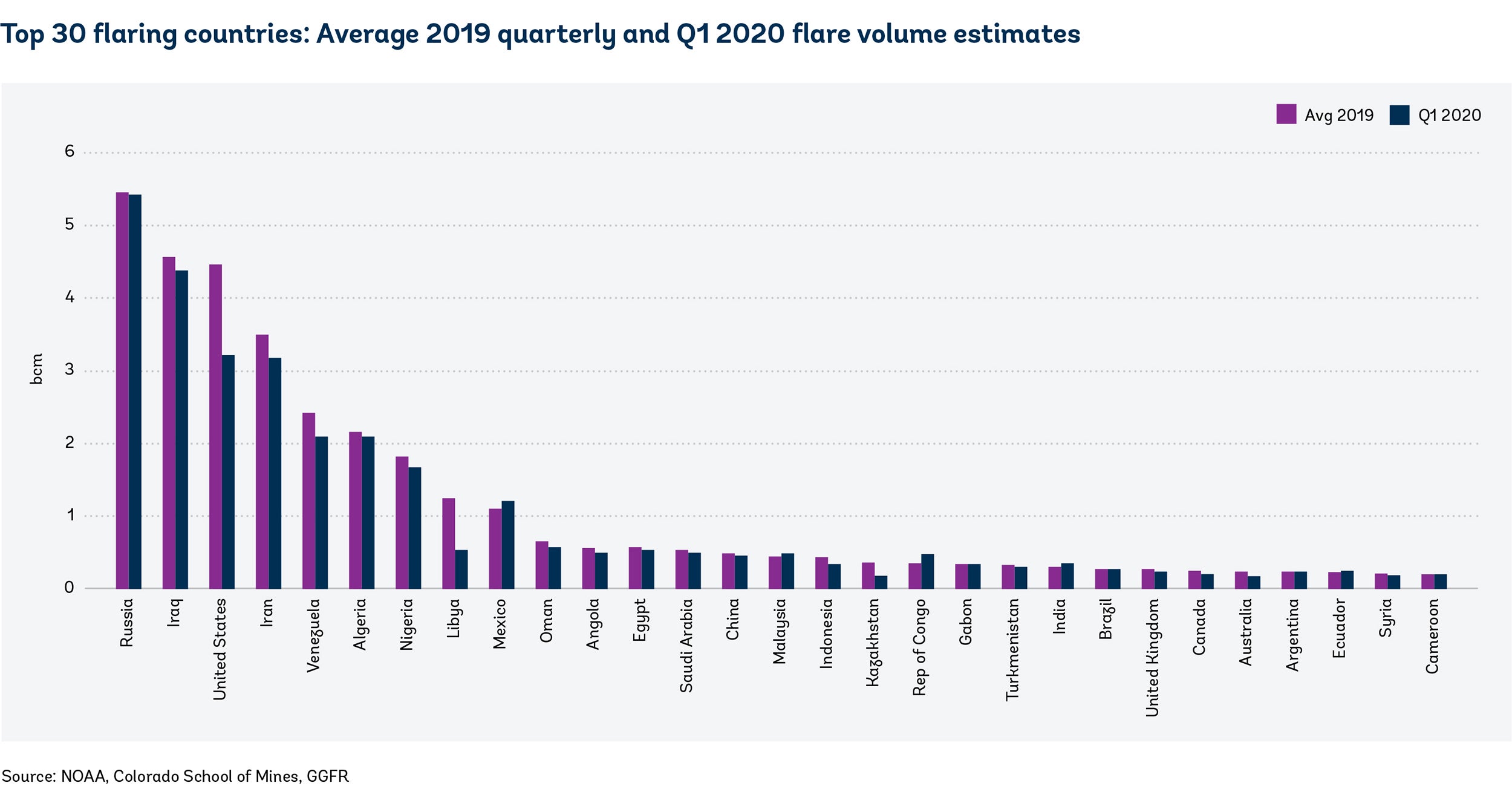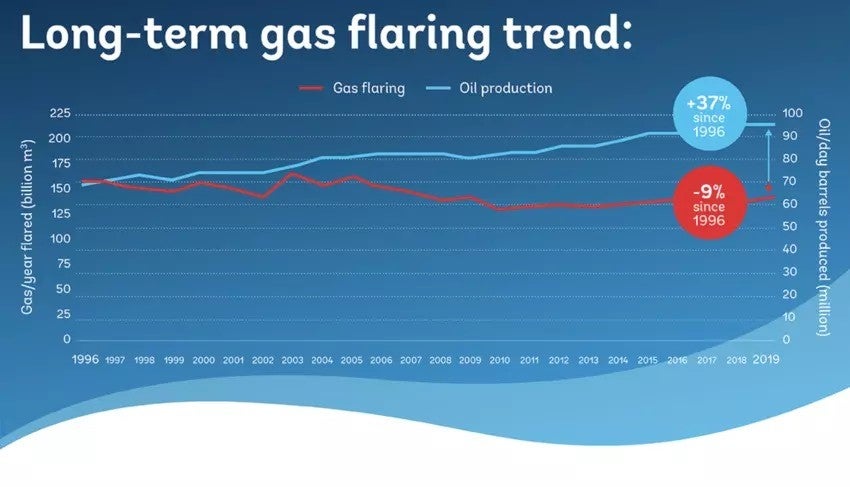We are now less than a decade away from the goal of Zero Routine Flaring by 2030, an ambition that sits at the nexus of climate change mitigation and energy policy. Developed by the World Bank and launched in 2015 by the UN, World Bank and several governments, along with oil companies and development institutions, the Zero Routine Flaring initiative is designed to end an oil industry practice that has existed since oil production first began more than 150 years ago.
During oil production, natural gas is produced from the reservoir together with the oil. Some of this gas is wastefully flared (burned), rather than conserved or used for productive purposes. Each year, about 150 billion cubic meters (bcm) of natural gas is flared, emitting 400 million tons of CO2-equivalent emissions and other pollutants , including methane (more than 80 times more powerful than CO2 over a 20-year period) and black carbon (soot). Black carbon from flares is also a short-lived climate pollutant that research shows accelerates snow and ice melting in the Arctic. According to an article published by the European Geosciences Union, gas flaring emissions contribute to about 42% of the annual mean black carbon surface concentrations in the Arctic.
Gas flaring also wastes a valuable energy resource. If half of the amount of gas flared annually was used for power generation, it could provide about 400 billion kilowatt-hours of electricity – that’s roughly the annual electricity consumption of Sub-Saharan Africa. Given that 789 million people live without electricity and an estimated 630 million could still lack energy access by 2030 (with nine out of 10 living in Sub-Saharan Africa), the time to act is now .
The goal of ending routine gas flaring now hangs in the balance. There is a risk that development progress is thwarted, as COVID-19 is likely to push 119-124 million people into extreme poverty. As outlined in the World Bank’s Global Economic Prospects, 2021 is likely to usher in a modest rebound to the world economy, with dampened oil demand and low oil prices weighing on the pace of recovery in oil-exporting economies. In this context, governments and oil companies may put on hold the capital expenditure and investments needed to end routine gas flaring, while sustainability and environmental efforts are marginalized. What’s more, the World Bank’s satellite data reveals a spike in global gas flaring, increasing to levels last seen a decade ago, to 150 bcm. These are worrying developments for us at the World Bank’s Global Gas Flaring Reduction Partnership, because we work with governments to develop the institutional capacity, policies, regulations and technical solutions to achieve a world free of routine gas flaring and venting.
While governments must divert limited resources towards managing the health crisis and distributing vaccines as quickly as possible, the pandemic has also revealed the urgent need to “build back better” and address climate change . This will involve not just reasserting and recommitting to climate goals, but also to furthering each country’s unique energy transition in a way that boosts long-term energy supply and increases recovery and resilience.
The commitment of governments and companies to manage the associated gas that comes with oil production is more important than ever before. As we examine the actions needed from now to 2030, it is helpful to reflect and consider how far we have come and where we are in this global effort. While oil production has increased by 37% over the last 23 years, the amount of associated gas flared has decreased by 9%. Without a doubt, this is a positive development and a gradual decoupling of a long-standing correlation between oil production and flaring. But much more should be done.
The rationale for capturing and utilizing associated gas really brooks no argument. So why does it persist?
To end all routine flaring across the world, the cost could be as much as $100 billion. Indeed, oil companies face significant challenges in configuring value chains to capture, store, transport and distribute this gas. Certainly, recent developments in small-scale, modular, gas utilization technologies have greatly improved the potential for associated gas use. However, not all such technologies are economically viable, and much depends on fuel and end-product prices. Small modular electricity generation plants, truck-mounted, modular liquefied natural gas plants and integrated compressed natural gas systems are viable alternatives to flaring – but they can be expensive, and even loss-making, for an operator. Put simply: you can’t fight the economics. Meanwhile, the tried and tested means of flare gas utilization – collecting the gas and transporting it through a pipeline – is heavily dependent on scale: that is, capturing a large quantity of associated gas from many flare sites, ideally located close to one another, and deploying it for productive use.
Despite these barriers, the World Bank will build on its track record of mobilizing more than 85 governments, companies and development institutions to commit to the goal of Zero Routine Flaring by 2030 and continue our support to oil-producing countries such as Ecuador, Egypt, Gabon, Indonesia, Iraq, Kazakhstan, Mexico, Nigeria and Russia. In this challenging environment, we must prioritize climate action, develop creative regulatory and technical approaches and solutions, embrace new public-private partnerships , and help resource-rich countries conserve or sustainably use – not waste – their natural resources.
This blog first appeared on weforum.org: https://www.weforum.org/agenda/2021/02/end-routine-gas-flaring-by-2030-heres-how/
Subscribe here to stay up to date with the latest Energy blogs.





Join the Conversation